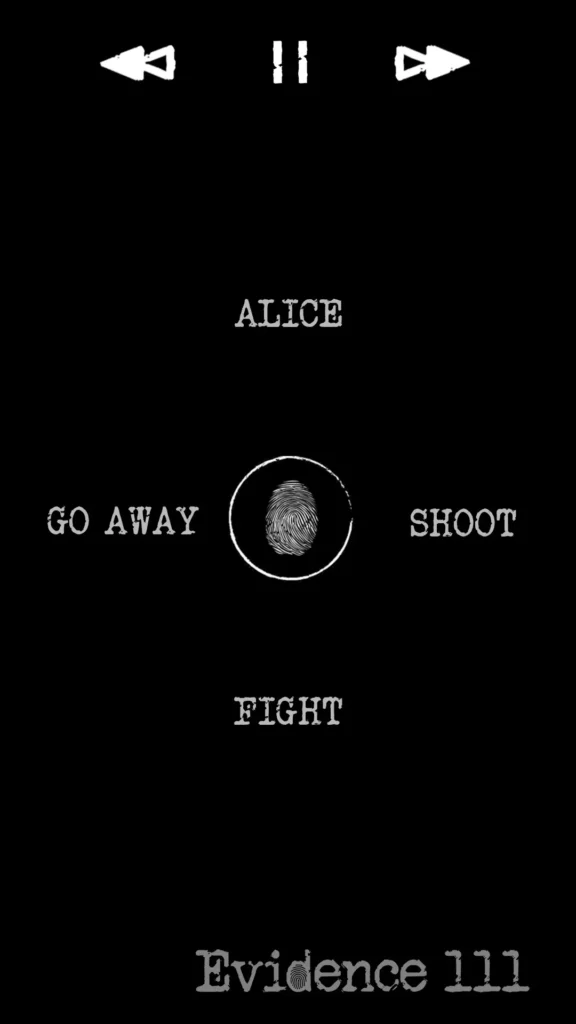
Evidence 111 is an immersive, interactive audio story game with impressive acting, but the story it tells isn’t as impressive as it’s set out to be.
Evidence 111 Review: Immersive Audio, Impressive Acting, Average Story
The interactive story game Evidence 111 features immersive sound and impressive voice acting, which come together to tell a fairly engaging story, though its choice-making mechanics don’t always carry the gravitas that the game intended.
Evidence 111 is unique in that it takes place entirely through audio, with the game’s interface consisting only of simple swipe controls that the player uses to make choices. This game comes from Czech developer Play by Ears, who specialize in audio games.
Evidence 111 is a game reminiscent of choose your own adventure books, where players will make choices that affect the fate of the protagonist, Chief Inspector Alice Wells. The game is set in 1985, a decade after an incident on Alice’s shift that has haunted her ever since.
Ten years later, a mysterious caller threatens to reveal her past if she does not bring a cover of evidence to the Harbor Watch Inn on remote Cork Island. Upon arrival, Alice quickly becomes involved in an investigation into the disappearance of a young boy named Hugo and must explore the old inn while determining who she can trust.
The voice acting in Evidence 111 is spectacular, using Hollywood actors like Gone Girl’s Rosamund Pike as Hugo’s mother Adele, and The Wheel of Time’s Zoë Robbins as Alice. The game has a relatively small cast of characters, as a major storm has decimated the Harbor Watch Inn’s usual number of staff, and each of them is pulled apart through the work of a strong cast.

In a game comprised entirely of audio, the way each character shines in their own unique way are integral to the player’s enjoyment and something Evidence 111 is very successful at. The game is an incredibly immersive experience best experienced with headphones. The Evidence 111 uses binaural audio, a technology similar to the PS5’s 3D audio technology.
Sound is recorded with a series of microphones that better simulate how humans perceive sound, and the result makes it feel as though players are right in the room with the game’s characters. The game’s ambient noises and soundtrack are also excellent, rounding out the game’s atmosphere and setting the mood between scenes.
Evidence 111 was designed with accessibility in mind, making the title just as enjoyable for visually impaired players with these advanced audio technologies and the title’s intuitive controls. The gameplay of Evidence 111 revolves around the choices Alice makes, which determine the actions that the final players receive.
While the game doesn’t offer as many endings as games like The Quarry, Evidence 111 does offer ten different outcomes that can befall Alice, which adds a fair amount of replay value. Some dialogue that remains the same can become repetitive during later plays, but thankfully the game allows players to fast-forward to particularly familiar sections.
Throughout the game’s roughly two-hour story, players will make a number of seemingly innocuous choices that have lasting consequences – however, the larger moral choices that the game is advertised to include often fall short. The end of the game offers some tough ultimatums, but the rest of the game consists of largely simple decisions.
In a scenario where many games lack accessibility options, a game designed with this at the forefront is a refreshing change. Evidence 111’s story isn’t particularly ground-breaking, and the choices never present much of a challenge, but the game’s strong acting, engrossing characters, and immersive soundscape make it engaging, nonetheless.
The experience can be compared to an interactive audiobook, easy to pick up and play in small doses or all at once, and for its low price the Evidence 111 is a must-have for any player looking for a new style of storytelling. Worthwhile experience.















